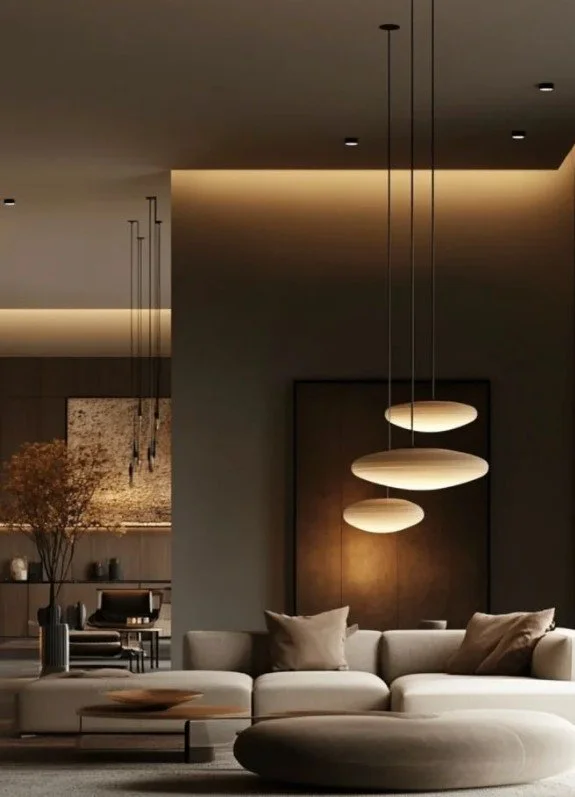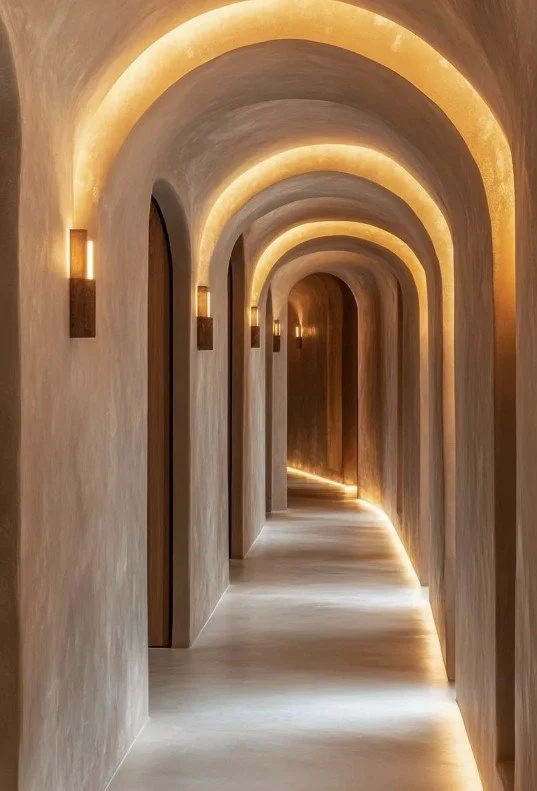Light as Emotion: Designing for the Nervous System
By Pavlina Campbell:
The Invisible Architecture of Emotion
In luxury interior design, light is often treated as a technical layer — a tool for visibility or ambience. But what if we reframe light as emotional architecture? As a direct communicator with the nervous system, light has the power to calm, energise, and even heal. In high-end homes, where well-being is as valued as aesthetics, designing with light becomes a form of emotional intelligence. Explore our Interior Design approach to see how light, texture, and emotion come together in bespoke spaces.
The Science of Light and the Nervous System
Circadian Rhythm & Cortisol: Natural light regulates sleep-wake cycles and stress hormones. Poor lighting disrupts this balance, leading to fatigue and anxiety.
Colour Temperature & Mood: Warm light (2700K–3000K) promotes relaxation, while cooler tones (4000K+) stimulate focus and alertness.
Light Intensity & Emotional Safety: Harsh overheads can trigger fight-or-flight responses. Layered, diffused lighting fosters a sense of safety and intimacy.
Designing Emotional Landscapes with Light
In high-end interiors, light should be curated like art — layered, intentional, and emotionally attuned.
Layered Lighting: Combine ambient, task, and accent lighting to create depth and emotional nuance.
Dimmable Systems: Allow clients to modulate their environment based on mood or time of day.
Directional Warmth: Use wall washers, uplights, and concealed LEDs to soften architectural edges and evoke serenity.
Material Interaction: Venetian plaster, brushed brass, and dark wood absorb and reflect light uniquely, creating tactile shadows and emotional warmth.
Material Alchemy: How Light Interacts with Texture
In our studio’s work, light is never an afterthought — it’s a collaborator. We often pair diffused lighting with tactile surfaces like plaster, brushed metals, and textured fabrics to create emotional gradients throughout a space. A soft uplight grazing a limewashed wall doesn’t just illuminate — it evokes stillness. A concealed LED behind smoked oak panelling adds depth and quiet drama. These interactions aren’t just visual; they’re felt. We explore this further in our post on Tactile Materials & Emotional Storytelling, where light and surface become emotional collaborators.
Whether it’s a layered living room or a contemplative hallway, we design light to move with the body and soothe the senses — creating spaces that feel emotionally attuned, not just aesthetically pleasing.
Emotional ROI: Why High-End Clients Care:
Wellbeing as Luxury: Emotional regulation through design is the new frontier of luxury living.
Personalisation: Nervous-system-aware lighting feels bespoke, intuitive, and deeply personal.
Future-Proofing: As wellness tech evolves, homes designed with emotional intelligence will hold greater value — both financially and experientially. Learn how we bring this philosophy to life in our Cambridge Interior Design for New Builds projects.
Designing for the Unseen
Light is more than illumination — it’s a silent language between space and self. When we design for the nervous system, we create homes that don’t just look beautiful, but feel like a sanctuary. Learn more about our philosophy and process on the About page.
At my studio, lighting is never an afterthought—it’s a language. We use it to shape serenity, express identity, and bring every space quietly to life.
Explore our bespoke interior design in Cambridge to see how we integrate lighting into every layer of the home—tailored design solutions for period and new-build homes that feel both personal and poetic.
Designing with emotional intelligence begins with a conversation. Contact us to explore your bespoke interior journey.



